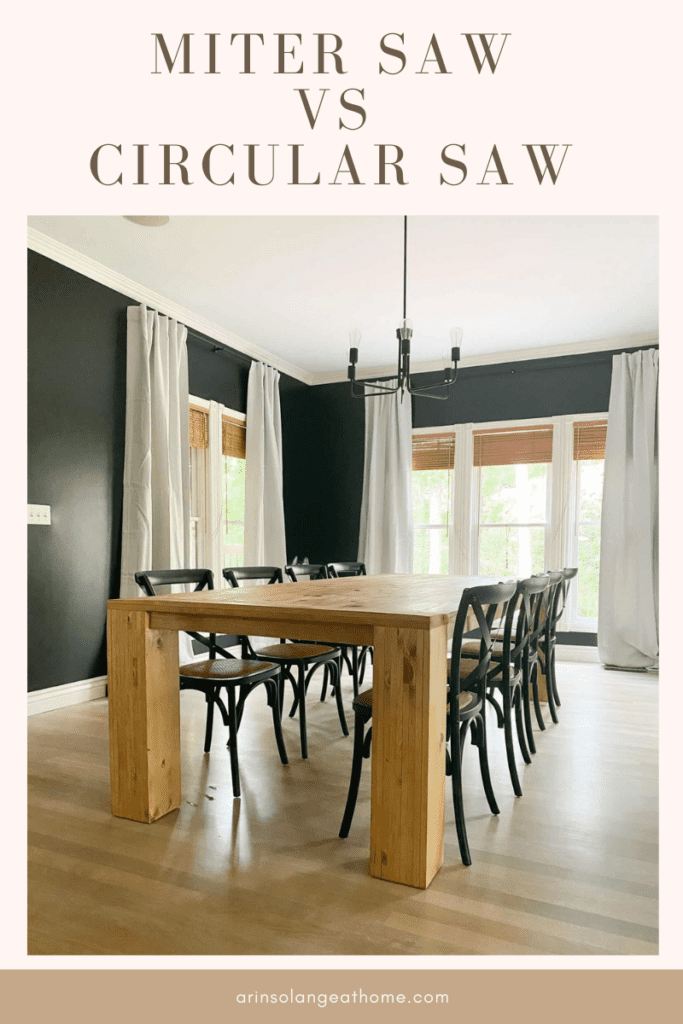Miter Saw vs Circular saw, what’s the difference? How many times do you scroll Pinterest and find DIY projects you want to accomplish only to discover that it is way too involved? As soon as you see that power tools are required you immediately exit out of the screen and go on your way. A lot of the time only one ‘big tool’ is in the budget, so let’s talk miter saw vs circular saw and help you pick what is right for you.
You only need a few basic tools and it all starts with the right saw. There are different options and different uses for different types of saws. I’ll share with you the key differences between the best miter saws and circular saws.

This post may contain affiliate links.
Miter Saw Vs Circular Saw
If you’ve been wanting to learn more about how to complete woodworking projects, then this post is a great starting point. In order to become an incredible DIYer you need to have some basic knowledge of power tools.
If you’ve ever wanted to build your own dining table, arched built ins, porch swing, or abacus baby walker then you need to have an understanding of different types of power saws.

Check out how to make your own DIY shelves with my post.
Not only should you know the main difference between a circular saw and a miter saw, but you should also know how to use these popular power tools. While both saws can be used on a variety of materials and projects, they can be utilized in different ways.
Both saws have circular round blades that are powered with an electric motor to cut through various materials like wood, PVC, and aluminum. While a miter saw is stationary and makes accurate crosscuts, a circular saw makes less precise cuts but can also make rip cuts as it is not stationary.
Keeping in mind your purpose for ownership, you’ll want to review these commonalities and differences to find the best choice for you.

This DIY Dining Table is a great dupe for Pottery Barn and West Elm alternatives.
The Skinny on Miter Saws
So what exactly is a miter saw? Let’s start with a basic overview of this versatile tool. A miter saw is also commonly known as a chop saw.
Imagine a stationary saw with a circular blade, beneath the blade is a spot where your wood that you intend to cut lies. The wood is on a track and your saw is brought down to chop the wood in a variety of cuts.

Check out how to make this Anthropologie dupe DIY light fixture.
These chop saws make different types of cuts at different angles as well as straight cuts. The type of miter saw you have (more on that in a minute) will dictate the different cuts you can make. So what exactly are the types of cuts you can make with a miter saw?
Common Cuts Utilized on the Miter Saw
If the miter saw is the way you go – here are some common cuts you can expect to be able to accomplish on a miter saw.
Miter Cuts
As the name suggests, this is a specific type of cut that the miter saw is known for. This type of cut is angled on the width (face) of the board. To make the angled cut, your saw will be angled horizontally to cut the board. If you look around your house, you’ll notice common miter cuts. Picture frames and door frames are commonly cut at a 45-degree angle in a miter cut.

Find out how to make mitered corners
Bevel Cuts
Not to be confused with a miter cut, a bevel cut is very similar in that both are cut at various angles. For a bevel cut, the biggest difference is the location of the angled cut on the board of the wood.
While miter cuts are angled on the face of the board, a bevel cut is angled at the end of the board. Imagine your board being angled through the thickness part of the board rather than the width.
With a miter cut, your saw is angled horizontally, in a bevel cut, your saw is angled vertically through the grain of the wood. You’ll often see this cut in a board and batten wall where the wall meets the baseboard for a seamless transition.
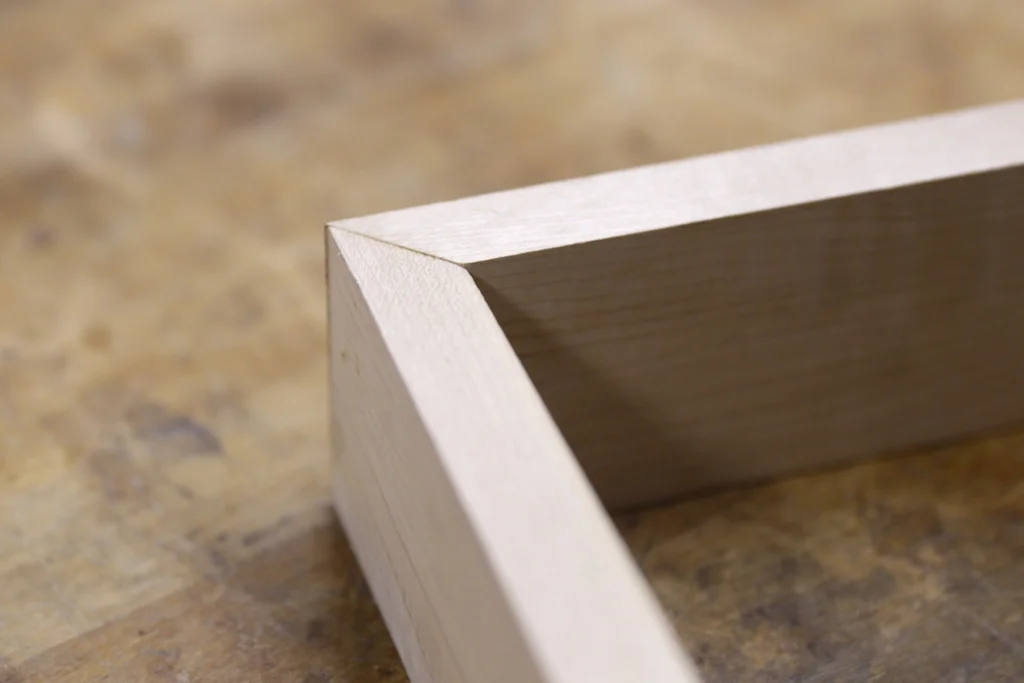
This is a great example of a bevel cut where the wood meets. You can see that the cut goes to the end of the board through the thickness. Check out more examples here.
Compound Cuts
A compound cut is simply a cross between a miter cut and bevel cut. You’ll often see this type of cut in crown moldings.

Learn how to make a compound cut to make a bowl
Cross Cuts
A cross cut is a very simple cut that occurs when you cut perpendicularly to the length of the wood. While a miter saw does do these cuts, this is also a cut that can be performed by a circular saw. You don’t need a specialized tool to perform these types of cuts. If you need a 1×4 board cut in half this is the cut you’ll use.
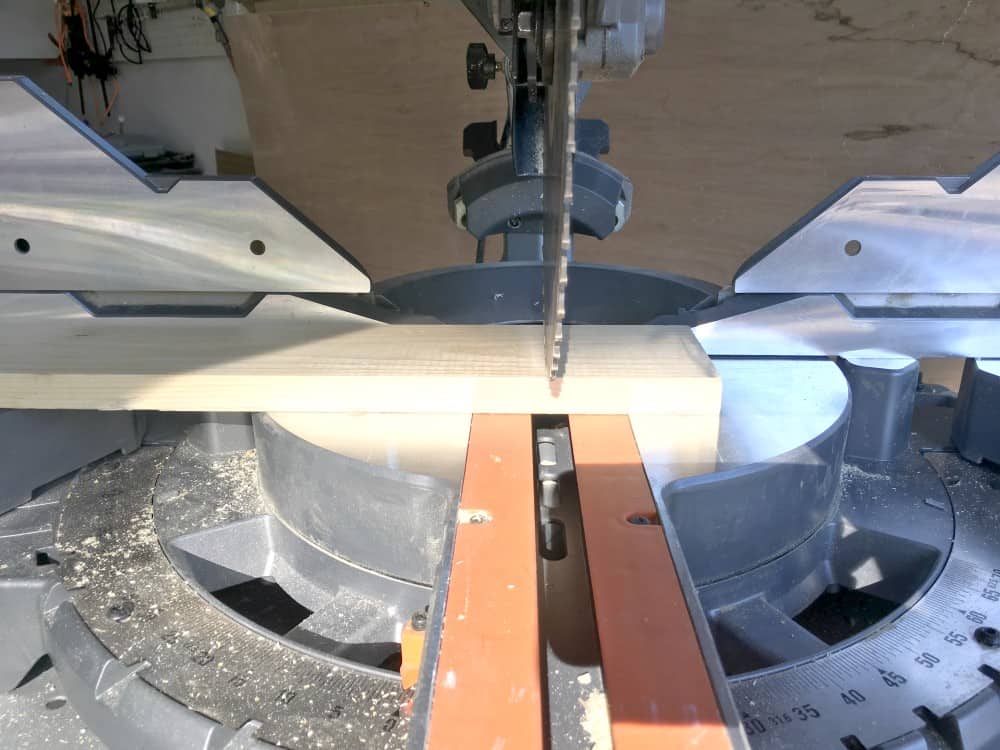
Rip Cuts
While I’m going to mention rip cuts under the miter saw section, a miter saw does not actually perform rip cuts. This should be reserved for circular saws. A rip cut is when you cut your board parallel to the grain of your wood.
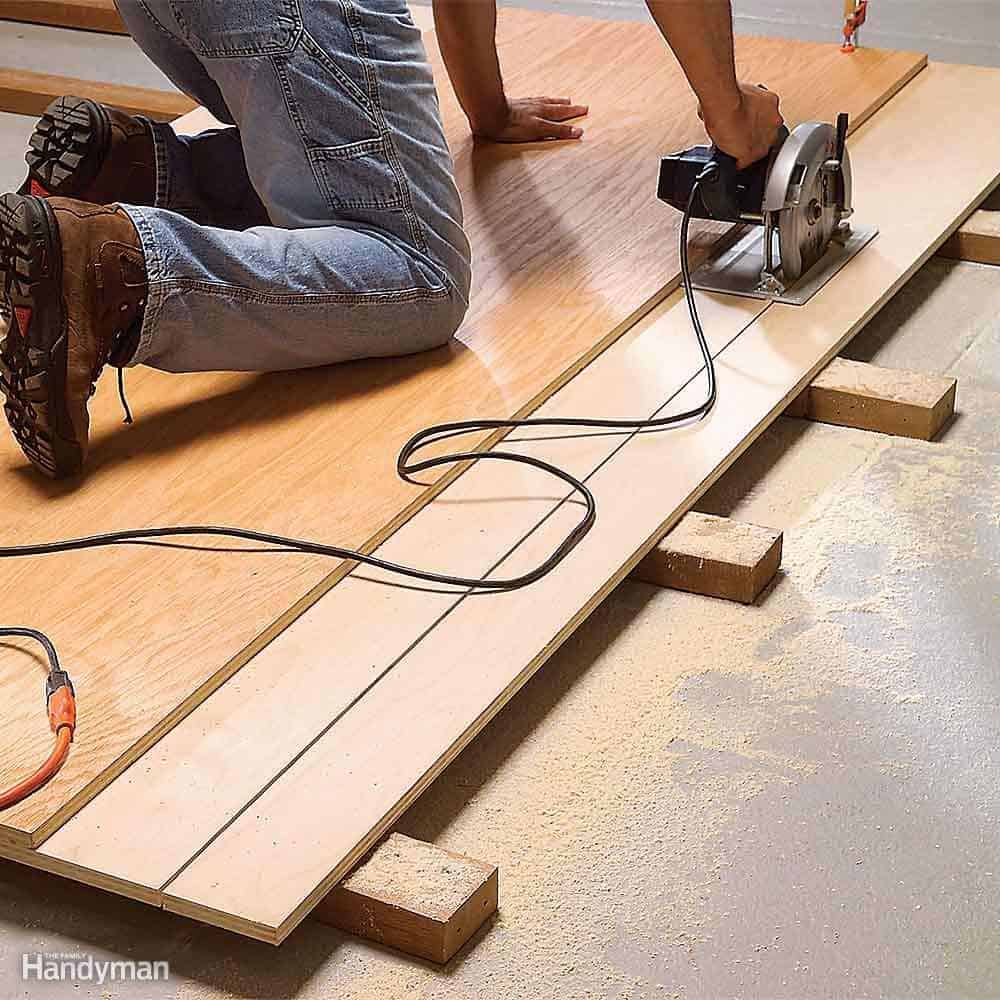
Check out more tips on ripping wood
Types of Miter Saws
There are several types of miter saws that you can pick to purchase. Each of these different saw types come in different sizes. Your ability to cut different materials is limited by your type of saw, size of saw, and blade size. For miter saws, one size does not fit all. Miter saws are a specialized tool. Depending on how you intend to use that tool, one choice will be clearly a better option over another.
Now that we’ve gone over different types of cuts, let’s put that knowledge to use and review the different types of miter saws.
Single Bevel Miter Saw
As the name suggests, a single bevel miter saw makes miter and bevel cuts in one single direction. You are only able to tilt your blade either left or right, but not in both directions. If you need to make cuts at opposing angles, then you would need to flip your board and begin the cut in the opposite direction to achieve the specific angles.

This is a great beginner saw! – We owned this for years and it was amazing!
Double Bevel Miter Saw
In the instance of a double bevel miter saw, your miter saw can be moved in different directions to make bevel and miter cuts from both left and right sides. In this instance, you wouldn’t be required to flip your board around to complete the cut. Rather, you would adjust your angle.
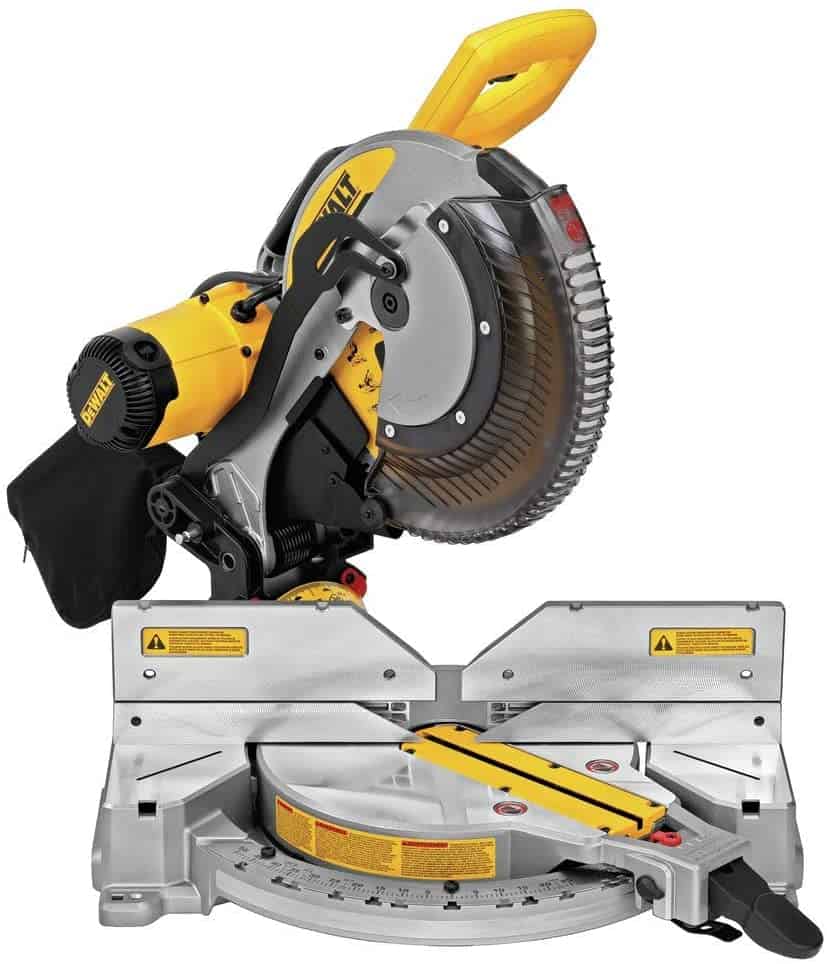
This 12 inch double bevel compound miter saw is a great option. –
Compound miter saws make compound cuts. If you recall compound cuts are a cross between a bevel and miter saw. This type of saw does it all: compound cuts, miter cuts, and bevel cuts.
Remember, this does not do rip cuts (those are reserved for circular saws). You may see that compound miter saws may come as either a single bevel or double bevel compound miter saw.
So while the compound miter saw can make all of the cuts, you’ll still need to keep in mind that if you chose a single bevel compound miter saw, you are limited in different directions. A double compound miter saw allows you to have the ability to perform all of the cuts as well as having the full range of direction on creating these cuts.

This 12 inch compound miter saw is a double bevel.
Sliding Miter Saw
You also need to keep in mind that because you are using a miter saw, you’re limited to cutting wood that fits within your track. If a board is too wide to fit in the track, then you have to get creative. A sliding miter saw allows you to cut those wider boards by sliding along the track.
Again, keep in mind that you can have a sliding compound miter saw that is still single bevel. So if having the ability to turn your saw both left and right to make those angled cuts is important to you, you may want to consider a double bevel compound sliding miter saw.

This is the saw we use! We love it and it has been very good to us! The 12 inch double bevel sliding compound Dewalt saw
The Right Blade
To confuse beginner woodworkers even more, miter saws will also come in different blade sizes. You have to remember that you are limited on cutting your wood by your blade size.
Most miter saws have blade sizes that range from 10 to 12 inches in diameter. The larger the diameter of your blade, the deeper and wider your saw can cut. If you have a sliding miter saw, your saw will be able to cut a bit wider, but your depth is still limited depending on your blade size.

Check out how to make your own DIY bed frame.
There are pros and cons to 10 inch versus 12 inch blade sizes. The 10 inch blade size tends to be cheaper and easier to move from place to place. You are limited on cutting depth and width, but if you aren’t necessarily going to be utilizing it for boards that are more than 5 inches, then a 10 inch miter saw will work perfectly.
For deeper and larger boards, you’ll want to stick with a 12 inch saw. Keep in mind you can always flip your board over and make the cut from the other side to go all the way through. This is, however, more work and more steps, which could give you a less precise cut.

DIY Fluted Wall Tutorial is available on my blog.
The Tall & Short On Circular Saws
Now that we have covered miter saws in detail, let’s go over a few key details for circular saws. Unlike the miter saw, circular saws are not on a track and are a handheld saw that requires a skilled hand. Not only should you be versed in your specific tool, but you should also take the appropriate safety precautions.
Your saw sits on top of your wood and you push the saw to cut through the wood. This leads to much more versatility than miter saws. Whereas miter saws are limited by width, a circular saw isn’t. Circular saws can cut both cross cuts and angled cuts.
All of the cuts a miter saw can perform plus riip cuts can be achieved by this powerful tool. The downside of circular saws is that they require a lot of practice. This isn’t a handheld tool that you can just pick up and use right off that bet.
It takes a skilled hand and unfortunately your cuts are only as accurate as you. So if you are unable to cut well in a straight line, you won’t have accurate cuts.
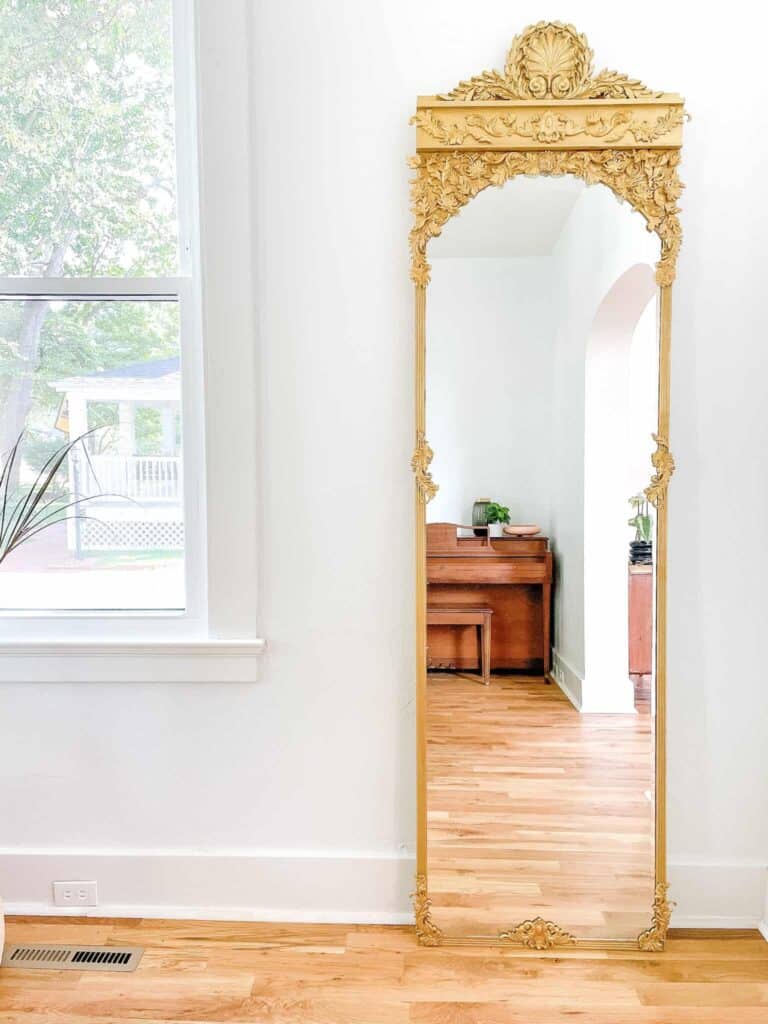
Check out how make your own DIY antique mirror.
Circular saws also come in different sizes which correspond to your blade size. Like the miter saw’s blade sizes, the circular saw’s blade size also determines the depth of your cut. The material you plan to cut will also help determine the type of saw blade you want to purchase.
There are all purpose saw blades, but specialized blades will be more accurate and yield better results. You’ll want to keep in mind that the number of teeth on a saw blade also corresponds to how clean of a cut your saw produces. A saw blade with a lot of teeth will produce cleaner results than a saw blade with less teeth.

This easy DIY built in desk is a great space saving solution!
Circular Saws At A Glance
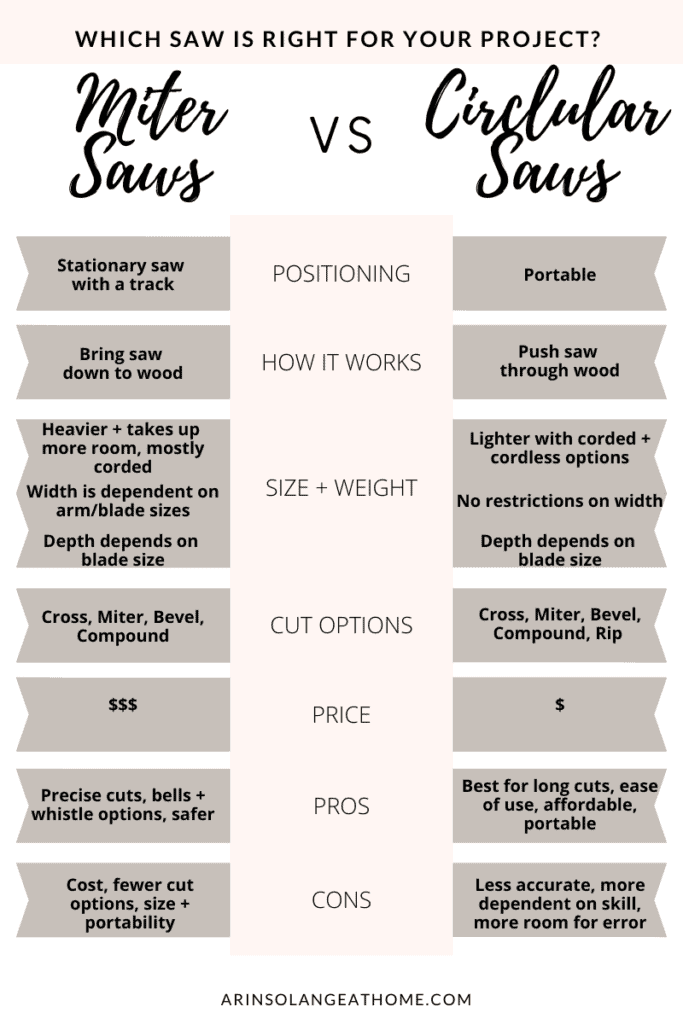
Name That Tool
You may be asking yourself when would it be appropriate to use a miter saw over a circular saw or vice versa? Of course there isn’t a right choice, but I would say that you would definitely make it harder on yourself by picking one that isn’t well suited for the task at hand.
Repeated Cuts: Miter Saw
Let’s pretend you are making a small table. For that table you will have at minimum 4 repeated cuts for the length of the legs. A miter saw would be well suited for repeated length cuts to ensure precision and accuracy. If you chose the circular saw, your cuts are dependent on you cutting them each the same all 4 times.

Check out how to make this DIY side table.
Crown Molding & Trim: Miter Saw
Both crown molding and trim work require precise angle cuts to be made so that they align perfectly. If anything is off, your entire project is off. Because of the precise angle cuts, a miter saw would be your best option.

Check out how this DIY faux crown molding for this cabinet was created!
Cutting Plywood & Trimming a Table: Circular Saw
Plywood sheets and tables tend to be extremely wide. Remember how we said that with miter saws you are limited on what you cut based on the width and depth of your material?
Your best bet would be to use a circular saw to avoid mismatched angles. If you have to stop and flip your wood halfway through, you are less likely to get those precise cuts. Not to mention, it would just be bulky and awkward on your miter saw.

Check out how to make your own DIY outdoor table!
Basic Safety
It would be irresponsible of me to fail to mention basic safety rules. Before you get a powerful saw, you’ll want to be familiar with safety techniques to keep you and any bystanders safe.
Always wear closed toe shoes
This should go without saying, but you always want to have closed toe shoes on while operating any type of saw or using power tools. One little slip could send your little toe off to the market crying “whee whee whee!”
Wear safety goggles
Safety goggles will keep your eyes protected from fine dust particles but also in the event of any wood splinters that may fly off and near your face.
Wear a respirator
It is never a bad idea to wear a well fitted mask/respirator when using a saw. The amount of dust you will breathe in can cause your respiratory tract to go into overdrive.
Keep your hands and fingers cleared from the blades
Avoid putting your hands and fingers under the blade even if it is not in use. This may sound pretty obvious, but I have to say it.
Wear ear protection
Have I forgotten ear protection before? Yes, yes I have. Should I forgo ear protection? No. Always wear ear protection. Your hearing will thank you later and you’ll avoid having to ask your children “What?” repeatedly.
Ensure firm grasp on wood
Make sure your wood is firmly clamped or secured while cutting. You don’t want your board to slip and cause your hand to go with it.
Miter Saw Vs Circular Saw – The best of the Best

- Dewalt 12 inch Sliding Compound Miter Saw – This is our current saw. She is a beaut. She does it all- compound cuts and can slide to help with those wide boards. With the 12 inch blade we have plenty of room to make deep cuts. This is also a double bevel saw so she does angle left and right. At the time of publication, there is an amazing sale available!
- Metabo Compound 10 inch Single Bevel Miter Saw– This was our old saw. This is a great first starting out miter saw. It is fairly light weight so you can easily move it around for projects. Keep in mind that with the single bevel, you’ll have to get creative for angles. If you are first starting out, chances are you won’t be doing many projects that involved complicated angles. Great price to boot!
- Ryobi 10 inch Sliding Compound Miter Saw
- Metabo 12 inch Sliding Compound Double Bevel Laser Marked, Compact Miter Saw – This is a great option if you want to invest in a quality miter saw. You may think that having the laser may seem fancy, but this is a great option for beginners. It helps ensure you are keeping your board straight before you make that cut!
- Dewalt 7 ¼ inch Corded Circular Saw with Electric Brake
- Bosch 7 ¼ inch Cordless Circular Saw
Other Posts You’ll Love
DIY Arched Built In | DIY Dining Table | DIY Fluted Wall | DIY Porch Swing
Pin This Photo Below For Later
I hope this post provided some clarity on the differences between a miter saws vs circular saw. Both saws are great tools and can be used for many different projects. I hope with this newfound clarity you’ll take on the challenge of your very own DIY projects. Jump in feet first and don’t look back. You can do this! If you have any questions, feel free to leave them in the comments section, and follow me on Instagram @arinsolange and TikTok for more home, decor, and DIY.
